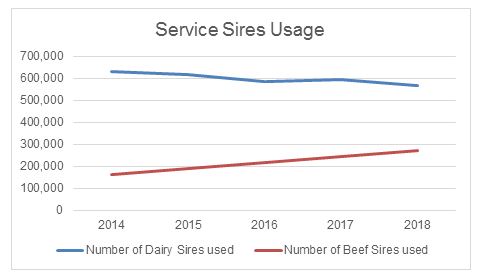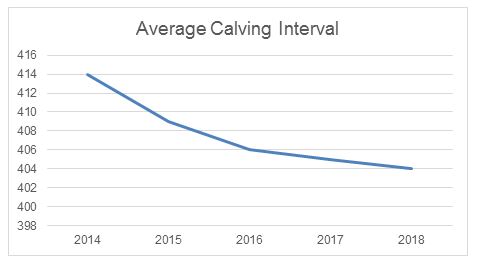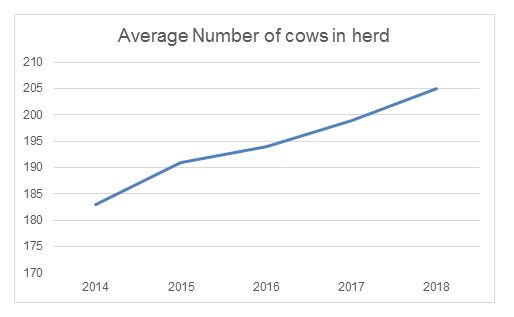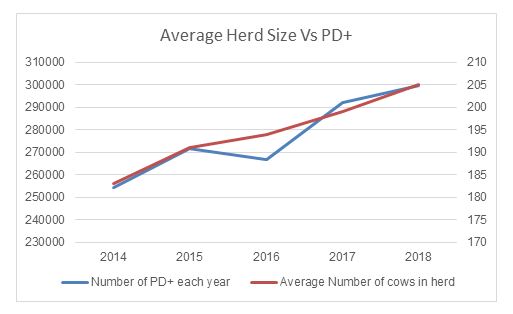
CIS Breeding Insight from Michael Whittaker
In 2018 we saw an increased used of beef semen within CIS herds and a decline in the use of dairy semen, which has been a steadily increasing trend for dairy farmers. In 2014 the number of total inseminations for beef semen was 161,806 whereas dairy semen usage was 630,966. In 2018 the beef insemination is now at 273,136 while dairy semen usage is 565,107 inseminations as highlighted in Figure 1. This means that beef semen usage is up by 69% and dairy semen usage is down by 10% since 2014.
Figure 1.
Calving Interval
Between 2014 and 2018 we have seen the calving interval of CIS animals steadily decrease which is positive news and in line with the ‘GB Dairy Cattle Welfare Strategy 2018-2020’ as proposed by the Cattle Health and Welfare Group which aspires to “Move positively towards a calving interval of 400 days”. The average calving interval for 2018 was 404 days compared to that of 2014 which stood at 414 days which is shown in Figure 2. Although the rate in which the calving interval is decreasing is slowing down the positive trend continues.
Figure 2.
Average Herd Size Vs Positive Pregnancy Diagnoses
Between 2014 and 2018 the average herd size has risen from 183 to 205 within CIS recorded farms which can be seen in Figure 3. The growth rate of farms has been increasing on a fairly consistent pattern which if continued would see the average herd size being over 240 by 2025. This means that the average dairy herd size would have doubled since 2003 if the current trend continues.
Figure 3.
This can then be directly compared to the number of pregnancy positive diagnoses which have similarly risen at a consistent rate when the two data series are laid over each other on a graph which can be seen in Figure 4. Therefore, the increased animal numbers has led to consistently good animal management as the positive pregnancy diagnoses have increased along with the calving interval decreasing with the growth in the average herd size.
Figure 4.
Summary
So, in summary, when looking through the data trends over the last 5 years for CIS milk recorded herds it has been highlighted that despite herd sizes increasing animal breeding management has not just continued on the same path but actually improved. There has been a rise in the number of beef services which in many ways will be helping to reduce the average calving interval and increase the number of positive pregnancy diagnoses and it doesn’t look like this trend will be slowing down any time soon with various industry schemes encouraging the use of beef semen.
The article was written by CIS Head of Processing & Project Manager Michael Whittaker




